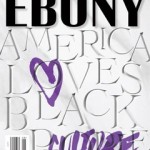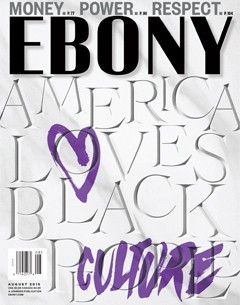
By//Errin Whack for EBONY Magazine Of the three national publications with major circulations that target African-Americans, two are Black-owned: EBONY (which leads with a circulation of 1.25-million) and Black Enterprise (at 527,000.) The third, Essence (1.1 million) founded in 1970 by a consortium of Blacks, was sold in 2005 to powerhouse publisher Time Inc. Harsh economic realities have saddled the entire magazine publishing industry–skyrocketing paper and shipping costs and a frequent decline of single copy sales at the newsstand (thanks in large part to the Internet)– but Black-owned magazines in particular are in a fight for survival. Perhaps the biggest struggle has to do with a perception by advertisers that Black audiences…

By//Errin Whack for EBONY Magazine
Of the three national publications with major circulations that target African-Americans, two are Black-owned: EBONY (which leads with a circulation of 1.25-million) and Black Enterprise (at 527,000.) The third, Essence (1.1 million) founded in 1970 by a consortium of Blacks, was sold in 2005 to powerhouse publisher Time Inc.
Harsh economic realities have saddled the entire magazine publishing industry–skyrocketing paper and shipping costs and a frequent decline of single copy sales at the newsstand (thanks in large part to the Internet)– but Black-owned magazines in particular are in a fight for survival. Perhaps the biggest struggle has to do with a perception by advertisers that Black audiences can just as effectively be reached through White publications and other media. “Casting Black faces in print and TV is no substitute for delivering culturally relevant messaging,” says Don Coleman, chairman and CEO of GlobalHue, a Black-owned marketing and advertising firm. “[Advertisers’] depth of understanding centers on a false sense of efficiency. By overlooking how African-Americans influence popular culture, they negate business growth.”
Samir Husni, Ph.D., director of the Magazine Innovation Center at the University of Mississippi, School of Journalism agrees. He notes that 2015 represents a radical increase in Black faces appearing on general market covers. “In 30 years of this business, I’ve never seen so many,” says Husni, also known as “Mr. Magazine.” “Magazine media has essentially transcended race. That’s the reason there is almost no longer a need for a Black magazine that only features celebrities. You can’t compete.”
Want to read the rest? Subscribe today to the iPad® tablet edition of EBONY Magazine and get an amazing offer of 12 issues for just $5.99, including the August issue featuring this “Race Sells” article. To get you started off right, we’ll include the incredible Black Music Month issue featuring Kendrick Lamar in your subscription.
— This feed and its contents are the property of The Huffington Post, and use is subject to our terms. It may be used for personal consumption, but may not be distributed on a website.
See more here:
August Issue of EBONY Examines How ‘Mainstream’ Media Outlets Cover Black People


























